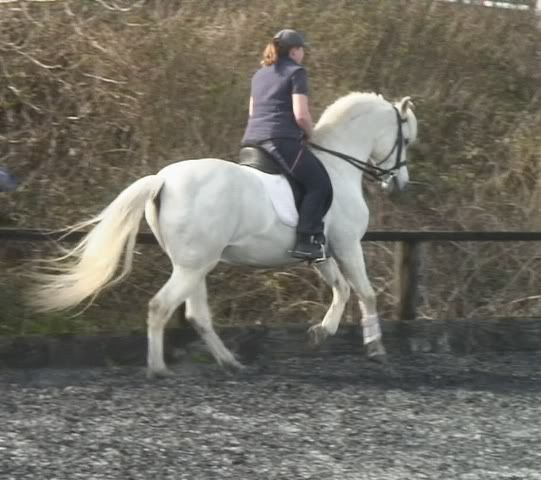This is a reply from Heather Moffett herself, to Dalesfan. She asked me to post it. Please let it stand.
Hi Helen,
Perhaps you could post this reply for me?
" I would like to stress that extensive computerised testing with our saddles, and a range of other treeless and treed saddles, was undertaken last year with the German Pliance computerised testing apparatus. All of the treeless makes tested, including our own, came out as well, and in many cases, considerably better than treed saddles.
I also undertook the testing to prove, as first and foremost a teacher of classical riding, that the way in which the rider interacts with the horse's movement and the balance in which he or she sits, greatly affects not only the performance of the horse, but also the efficacy of the saddle.
It was easy for me to tell exactly what each rider was doing, by the moving pressure patterns on the PC, without having to look at the caption. It proved to me beyond a doubt, what I have been saying about poor riding techniques, for many years.
My own horses are valuable Iberians. All have been ridden in the SBS and subsequently, the Fhoenix, since arriving from Spain or Portugal. ALL have developed their backs to perfection in musculature, and have gone up the equivalent, in two cases, of four treed saddle sizes.
This was Hispano Arab, Fantasia, on arrival from Portugal six years ago.

This is him, now,


I think that you will agree that the SBS and Fhoenix
havent precluded his development!
I went the treeless route, because when designing and selling treed saddles with Barrie Swain, we had so much trouble finding enough decent fitters who knew what they were doing.
I wonder how many of you know just what percentage of treed saddles have twisted trees, even from new? A previous president of the Worshipful company of Saddlers went through all 800 odd trees at Saddlers Hall and found around 75% were asymmetric. They are, except for moulded plastic ones, made by human eye and hand, and are therefore very prone to error when made on a large scale.
We regularly found stirrup bars lower or more forward on one side than the other, girth billets stitched on further forward on one side than the other, pulling the saddle squint as soon as it was girthed up.
Lumps where the leather hadnt been skived down properly where the flap is attached to the tree, causing pressure points which, in one saddle I have here to show students, the panels, having been out of the saddle for two years, have not returned to shape.
A friend who is a PhD, is about to undertake a survey of the ratio of problems found in treed saddles compared with treeless saddles.
Treeless saddles have been around since the Scythian army, 2400 BC and are still widely used in many parts of the world.
The Argentinian gauchos, make their own totally treeless Recado saddle, which has been used for generations ,and even Dr Deb Bennett approves of!
The Torsion is based on the age old Bardello saddle of Italy, the high pommel and cantle being stuffed with straw to give shape and substance, but the whole saddle being completely treeless.
The British Army used the Pilch saddle for several centuries, which was a treeless saddle mainly in use by the Dragoons, as a lightweight and easily transported saddle. Barrie Swain was making treeless hunting saddles until the 1960s when they went out of fashion due to the introduction of forward cut spring treed jumping saddles.
I have a dossier probably close on 2" thick, which I collated during the Ansur lawsuit, and which I wish I had time to turn into a book, as it is a fascinating historical record of treeless saddles through the ages. The tree was introduced solely to spread the weight of soldiers in heavy armour!
As for standing the test of time, the Torsion has been on the market since 1996, the Ansur since 99. The original prototypes of the SBS are still going strong, and the very original one from 1997 is still in daily use on a friend's Arabs and Iberians!
I would never sell a saddle that I believed would damage a horse. It is against the ethics and philosophy of Enlightened Equitation- even my agents have to sign an agreement that if for any reason they thought that a saddle would not suit a particular horse or rider, they would not make a sale, however much the rider wants one, the customer is not always right!!
These photos are of a pony which had been fitted by a SMS qualified saddler, with a brand new saddle of a well known make. This photo was taken nine months later, the recessed stirrup bars common on treed saddles to prevent the stirrup buckle sticking into the rider's leg, having caused raised lumps and white marks.

The owner bought a Fhoenix and one year later, the white marks have all but gone, gone and no soreness or raised lumps whatsoever.
I rest my case!"
Cheers,
Heather